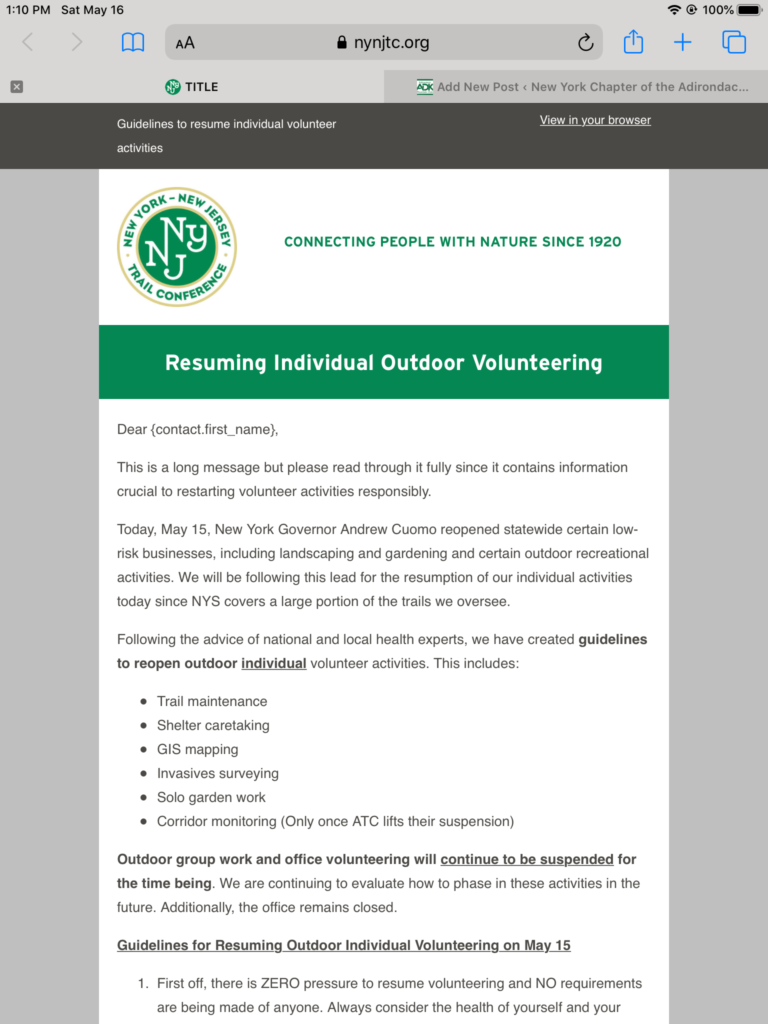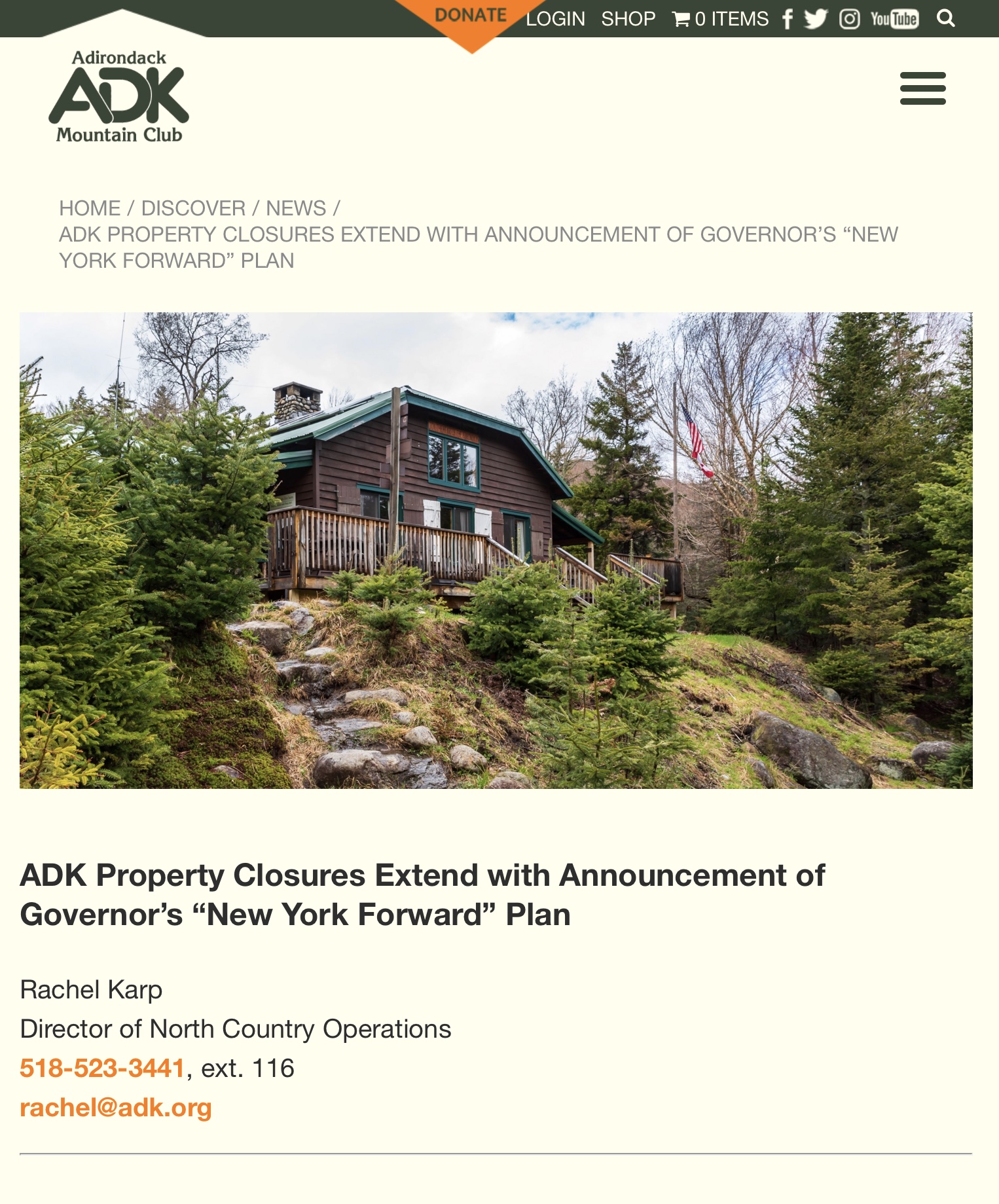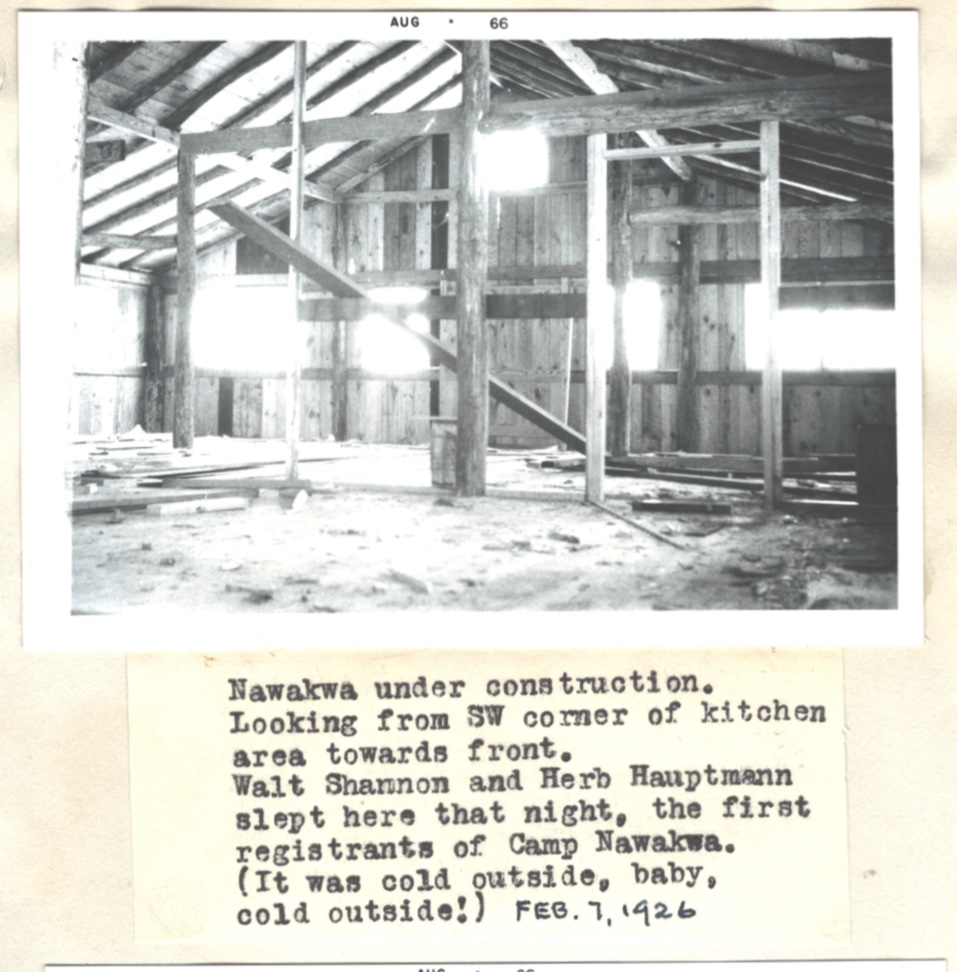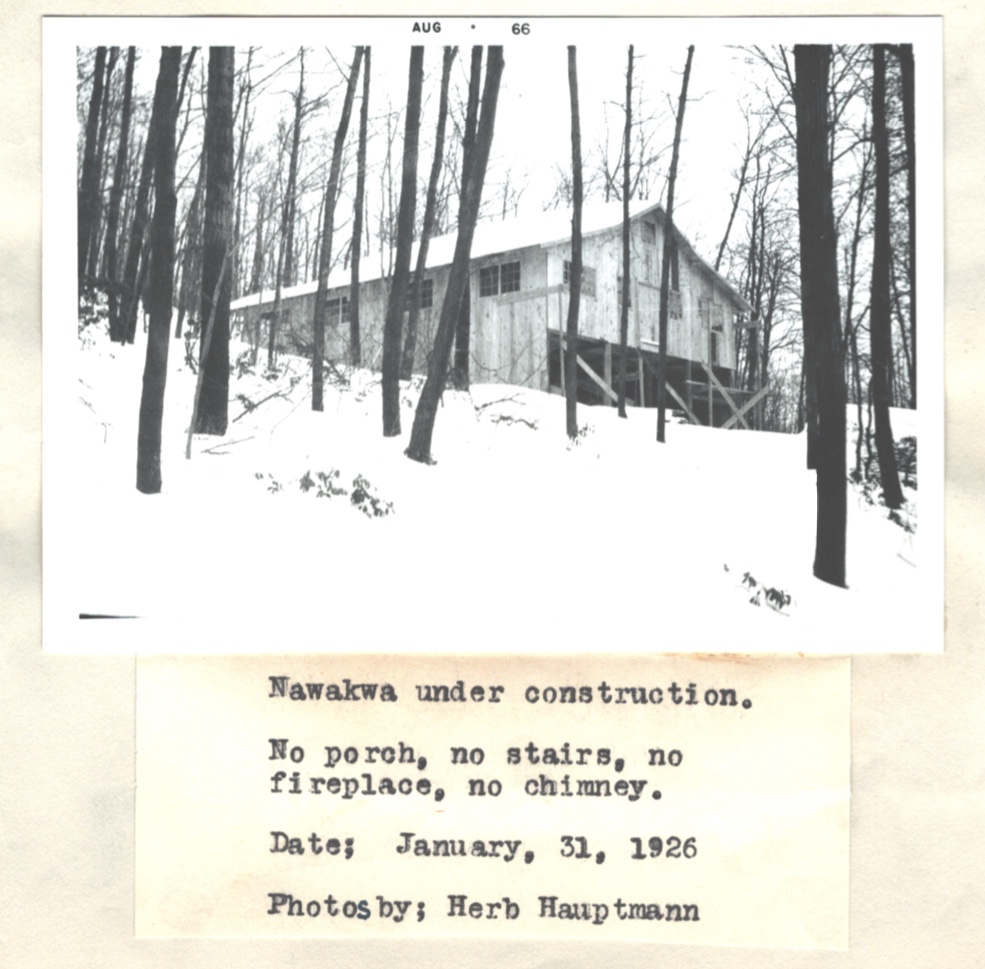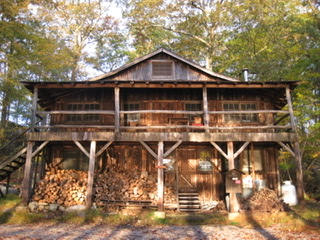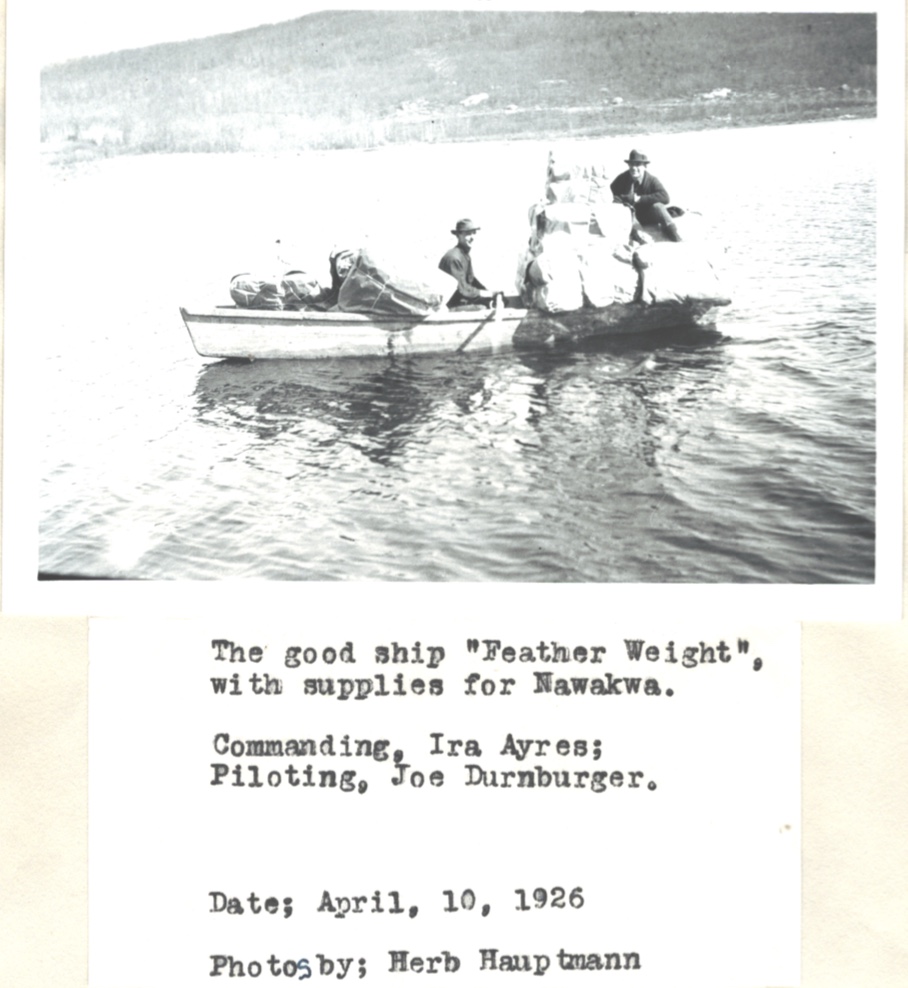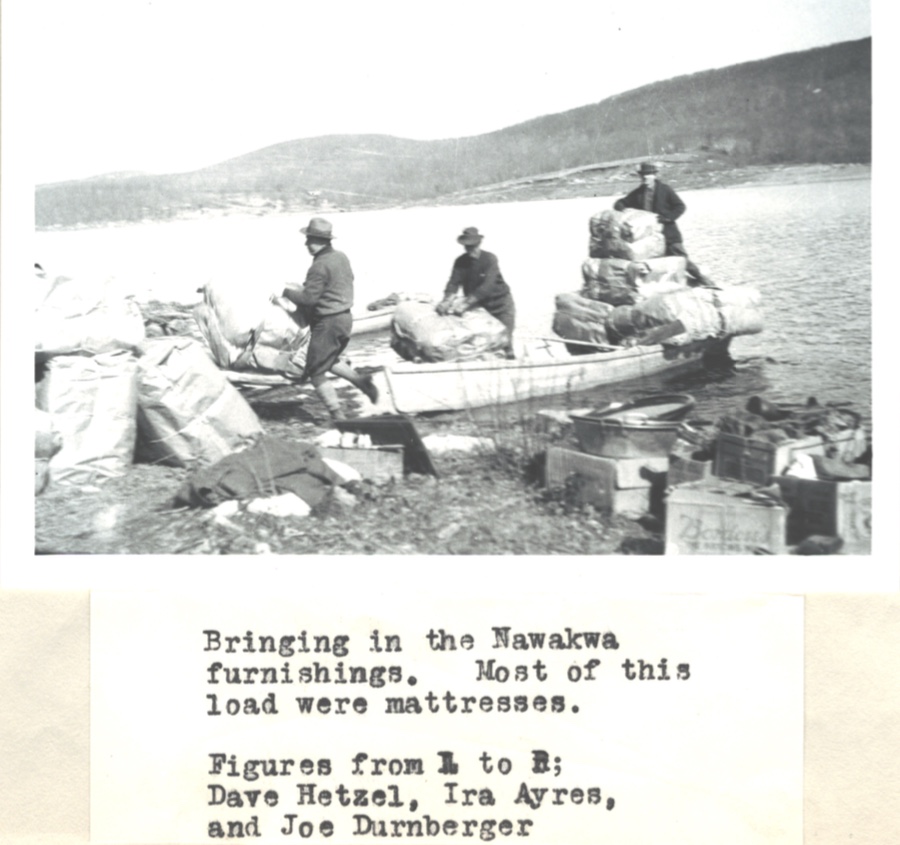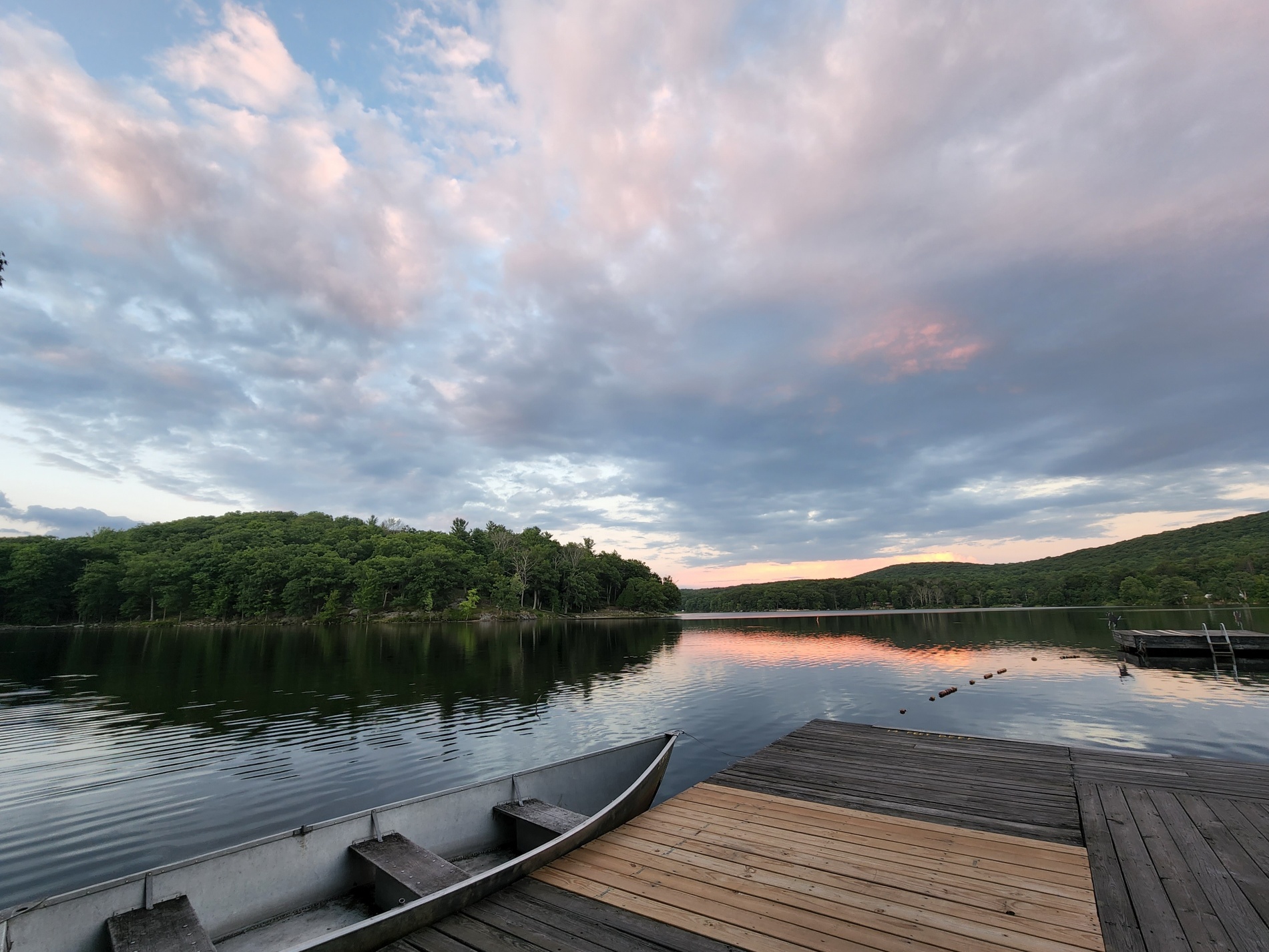Keyholder members: Please refer to the update from our Hosting Committee in Keyholder News
Slowly but surely …
Update from ADK in Lake Placid
100 Years: Opening Day
A series of posts as we look forward to the 100th Anniversary of ADKNY in 2023
As 1926 was a busy year for the NY Chapter, I’ll would dedicate a second message to this year. To further quote from Ira Ayers’ A History, ADK Club New York:
“Preparatory to the purchase of all the essential supplies and equipment, a source of ready cash was required. We had slightly more than broken even during our stay at Blue Bird. The Council most wisely levied an assessment of $10.00 (today’s value: $144) on each member to help defray the costs. As an aftermath of this action it was deemed unfair for all the succeeding new members to go untaxed. Hence the $10.00 initiation fee was instituted.
Long before the April 1st date, the necessary equipment and supplies had to be decided upon and ordered. As mentioned previously, the coal range, folding tables and pump and water line from the lake were brought in by the Park during the winter. Norman B. Schomburg, through his company, purchased many of the items for us at wholesale. These included the lockers, boats, oil lamps, the 2 stoves in the living room, 40 to 50 folding chairs, the old hickory chairs and settee, etc. Also, he put me in touch with the Groff Bent Corporation for beds, mattresses and pillows, stating that we would get the bottom price on the same and thereby save his company’s 5% commission. From the very beginning a telephone was considered an absolute necessity and was ordered. It was installed in June.
During the winter we made several excursions down from Blue Bird, watching the progress of the construction and also watching the ice on the lake. Our timetable called for the ice to be gone by April 1st. In the meantime Walter Shannon spent a night in the partially erected building to be the first to spend a night in the new camp.
The first move was made on April 4th when we brought over from Blue Bird all our worldly possessions. This included such items as blankets, a 3-burner oil stove, general utensils, “silverware”, the auxiliary water tank, the flexible flyers, etc. At the same time, the beds, mattresses, and pillows were awaiting the April 10th delivery.
This brings us to April 10th, the actual opening day. The grand opening took place a week later, April 17th, 1926. To the average person now this may seem like any other day, but to us it was a grand occasion. The company agreed to deliver the beds, mattresses and pillows if we would provide guides for the truck drivers. Joe Durrenberger and I rode one truck and Herbert Hauptmann the other. The lake was only partially flooded at that time, the water level being about the same as when work was done on Sebago Beach. This would involve frequent wading when loading and unloading the boats due to the rocky shoreline. A strong crosswind was blowing and the task of operating the old tublike boats with mattresses six high required considerable maritime skill. The real labor involved at this stage consisted in carrying all the items up the hill to the various cabins and placed in order. It is a marvel that 25 souls did so much in such a short time, completing the job well before night.
The cooks did a swell job in preparing a full meal for so many hungry mouths. All the cooking had to be done on the 3-burner oil stove. The coal range was installed but without any coal. The dinner table consisted of three long boards nailed together and supported by saw-horses. Improvised benches provide the seats. This April 10-11, 1926 was actually a work weekend.
The official grand opening was a week later, April 17-18, 1926. Every one of the 60 beds was occupied. A grand and glorious time was had by all.
The attached photos by Herb Hauptmann are graciously donated by Geoff Weaver. They are from his father ( Walter Weaver)’s photo album.
Ellen King
Archives Committee
100 Years: Transitioning from Camp Blue Bird 1925 – 1926
A series of posts as we look forward to the 100th Anniversary of ADKNY in 2023
The NY Chapter, ADK moves from subleasing Camp Blue Bird to having a camp of our own. To quote from Ira Ayers’ “A History”:
“During the summer of 1925, while working for the Camp Department of the Park, Miss Jolliffe, the Superintendent of Camps, asked me if the New York Chapter would like to have a camp on the new Lake Sebago. Elevation 778 feet. My reply was a positive “yes” but that the official offer should be made direct to the Chapter Council. This was done and the offer was immediately accepted officially.
The first big question that required an answer was where should it be located. A committee consisting of A.T. Shorey, Adolph Sippe and a third was appointed to recommend the site. The location selected by this committee was in the birch grove on the east side and near the upper end of the north arm.
This provoked a storm of protests. In those days almost everyone rode to Sloatsburg or Tuxedo and walked in. The protestors wanted a location on the west side of the lake and on deep water. Herbert Hauptmann, Walter Shannon and myself and others walked down from Blue Bird on numerous occasions to scout the area. We pressured the Council to select the present site which appears to us to have been the best. The site was officially selected by the Chapter and Frank J. Oliver met J.J. Tamsen, the Superintendent of Construction, and the location was official with the Park.
Before any definite action could be taken it was necessary to decide on what the capacity of the camp should be. The Camp Committee had many loud and active sessions discussing this point. Some were very strong for a capacity of about 25. Others wanted a much larger capacity to provide for growth and expansion, and also to provide income sufficient to pay the rent. The final decision was a capacity of 60. Now we were in a position to tell the Park the desired dimensions and number of cabins, and also to make the appropriate plans for the necessary equipment to be purchased. From our experience at Blue Bird, it was decided to have all the sleeping quarters out and away from the main building. Also, it was thought best to have the buildings somewhat removed from the shoreline.
I met Mr. Tamsen at the site and selected the locations of the main building, the five cabins and the dock. The sixth cabin was added in 1929. The dock was located on deep water and also where it would be clearly visible from the porch. Mr. Tamsen then made his plans for the construction which we requested to be completed by April 1, 1926. The chimney and fireplace were completed before the winter set in. All the equipment and supplies were trucked in over the ice and up the old road from the canoe dock. Also the coal range, the small folding tables and the pump and water line from the lake was brought in at the same time. These items were purchased from the Park. Of course there was no road in to camp at that time.”
1925 was a busy year for the NY Chapter and the Adirondack Mountain Club. Our Chapter had been established two years earlier. The Albany Chapter was the first Chapter to be established only three years earlier. A vote was taken to amend the ADK Constitution to address the division of members’ dues between the parent club and the chapters to provide the chapters with the necessary finances to support their local activities. Members of the NY Chapter withheld payment of their dues to support this cause. One incentive for the main club to support this was their interest in forming additional chapters. The new financial arrangement would encourage regions throughout New York State to create chapters and thus increase the membership of the ADK.
The attached photos are from Walter Weaver’s photo album generously contributed by his son, Geoff Weaver. The photographer: Herb Hauptmann.
Ellen King
Archives Committee
- « Previous Page
- 1
- …
- 62
- 63
- 64
- 65
- 66
- 67
- Next Page »
